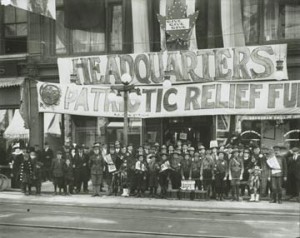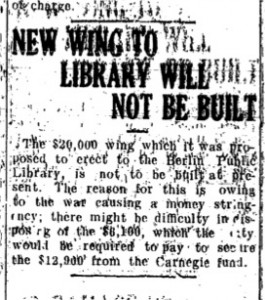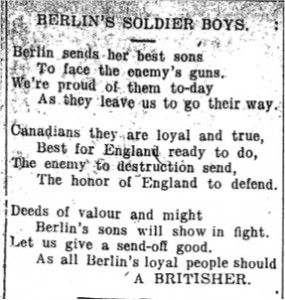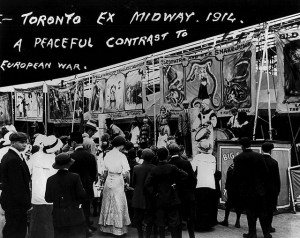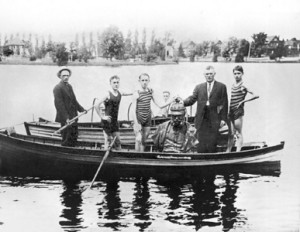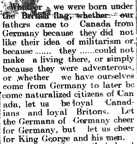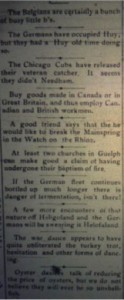On 11 August, acting Mayor W. E. Gallagher gave orders for the City Hall flag to be hoisted, so that there would be no question in the minds of visitors where the Berlin, Ontario’s loyalty laid during the war. The City Hall flag was a Union Jack, which would be flown to demonstrate Berlin’s loyalty to the British crown. The flag would fly in Berlin until the war was over. Waterloo and Hespeler followed suit and flew their Union Jack flags as well.
Similar acts of patriotism were displayed elsewhere in the region. Patriotic Church services were held in Berlin, Waterloo, and surrounding communities. Additionally, C.E. Swaisland placed a patriotic display in the window of his bookstore. In the center he placed a portrait of King George V and covered the rest of the window with flags and other military symbols and articles to represent the artillery and infantry. A portrait of Canada’s Governor-General, the Duke of Connaught, was also displayed. The Berlin Daily Telegraph and Waterloo Chronicle Telegraph proclaimed the window display the most fitting for the current crisis. It is evident that citizens of Waterloo Region wanted to demonstrate their patriotism in a visible way.
(“Ordered the City Hall Flag Hoisted,” Berlin Daily-Telegraph, 11 August 1914; “Ordered the City Hall Flag Hoisted,” Waterloo Chronicle-Telegraph, 13 August 1914; “Where is the Town Flag,” Hespeler Herald, 27 August 1914; “Fine Patriotic Window Display,” Berlin Daily-Telegraph, 11 August 1914; “Fine Patriotic Window Display,” Waterloo Chronicle Telegraph, 13 August 1914; “Patriotic Services on Sunday,” Berlin Daily Telegraph, 15 August 1914.)

